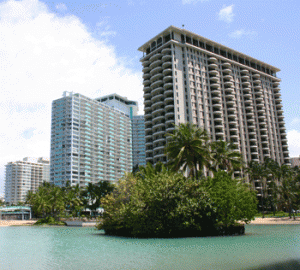The market share of vacation and investment-home sales held steady in 2010, although the sales volume declined with the overall market, according to the National Association of Realtors.
 NAR’s 2011 Investment and Vacation Home Buyers Survey, covering existing and new-home transactions in 2010, shows vacation-home sales accounted for 10 percent of transactions last year while the portion of investment sales was 17 percent, both unchanged from 2009.
NAR’s 2011 Investment and Vacation Home Buyers Survey, covering existing and new-home transactions in 2010, shows vacation-home sales accounted for 10 percent of transactions last year while the portion of investment sales was 17 percent, both unchanged from 2009.
“Despite extraordinarily tight credit conditions for purchasing a second home, the market share for vacation and investment homes held steady,” says NAR Chief Economist Lawrence Yun. “A sizeable number of buyers made deals with all-cash offerings.”
All-cash purchases have become prevalent in the second-home market in recent years: 59 percent of investment buyers paid cash in 2010, as did 36 percent of vacation-home buyers.
With an overall decline in home sales during 2010, the volume of 543,000 vacation-home sales was down 1.8 percent from 553,000 in 2009. Investment purchases fell 7.8 percent to 867,000 in 2010 from 940,000 the previous year. Primary residence sales declined 5.6 percent to 3.81 million from 4.04 million in 2009.
The median vacation-home price was $150,000 in 2010, down 11.2 percent from $169,000 in 2009, while the median investment-home price was $94,000, which is 10.5 percent below the $105,000 median in 2009. By contrast, the median primary residence price declined a relatively modest 4.5 percent to $176,700 last year from $185,000 in 2009.
“The fall in home prices has opened opportunities for more families to enter the second-home market – the median income of investment buyers today is lower than it’s been in recent years,” Yun said. While the median income of vacation-home buyers in 2010 is slightly above 2007 when it was $99,100, the median income of an investment-home buyer is 5.7 percent below $92,900 in 2007.
The typical vacation-home buyer in 2010 was 49 years old, had a median household income of $99,500 and purchased a property that was a median distance of 375 miles from his or her primary residence; 31 percent of vacation homes were within 100 miles and 41 percent were more than 500 miles.
Investment-home buyers had a median age of 45, earned $87,600 and bought a home that was fairly close to their primary residence – a median distance of 19 miles.
“Even if purchases are delayed due to economic circumstances, the underlying long-term demand – the desire for purchasing second homes – remains because people in their 30s and 40s will reach the prime age for buying and will drive the second-home market in coming decades as conditions permit,” Yun added.
Thirty-six percent of vacation homes purchased in 2010 were in the South, 27 percent in the West, 19 percent in the Northeast and 15 percent in the Midwest; 3 percent were located outside of the U.S.
The distribution of investment properties differed from vacation homes: 32 percent were in in the South, 24 percent in the West, 21 percent in the Northeast and 20 percent in the Midwest; 3 percent were purchased outside the U.S.
NAR’s analysis of U.S. Census Bureau data shows there are 7.9 million vacation homes and 41.6 million investment units in the U.S., compared with 74.8 million owner-occupied homes.
NAR’s 2011 Investment and Vacation Home Buyers Survey, conducted in March 2011, includes answers from 1,895 usable responses about home purchases during 2010. The survey controlled for age and income, based on information from the larger 2010 NAR Profile of Home Buyers and Sellers, to limit any biases in the characteristics of respondents.
